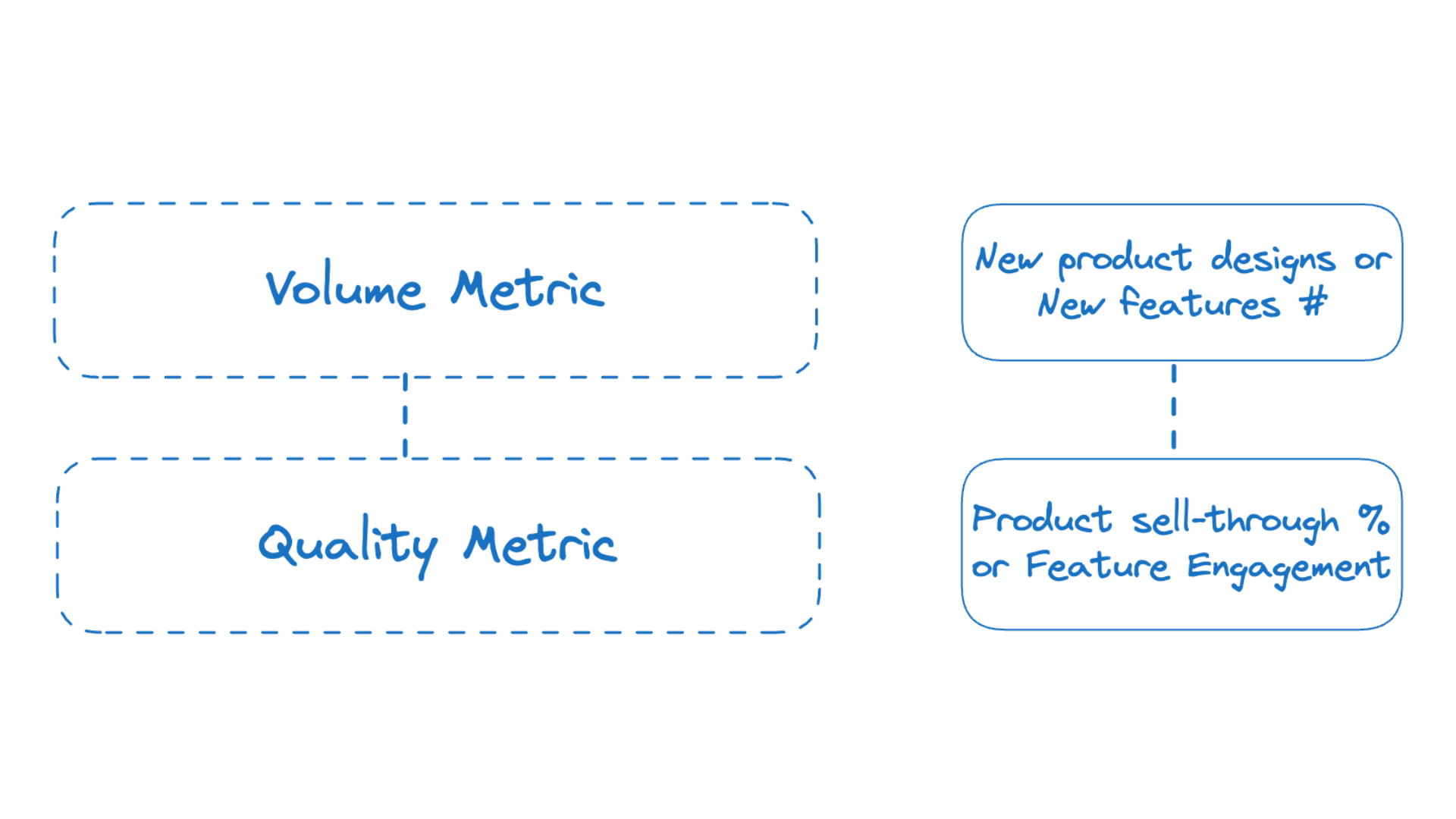Why are Metrics Paired?
The second foundational concept, paired metrics, builds upon our understanding of metric hierarchy. While a metric hierarchy helps organize and prioritize metrics, paired metrics ensure a balanced & comprehensive view of business performance.
They prevent skewed perspectives that might come from looking at a single north star metric in isolation and encourage a nuanced understanding of looking at both the volume and quality of an outcome.
Together, these two concepts form a robust foundation for identifying and utilizing KPIs effectively in an internet business.
Understanding Paired Metrics:
In business analytics, metrics are often paired to provide a balanced understanding of performance. This pairing approach matches a performance metric with a contextual or balancing metric to ensure that actions driven by data don't lead to unintended consequences.
While one metric might focus on total volume or output, its pair will typically reflect quality, satisfaction, or input, providing a holistic view of performance.

First Example - Customer Support Efficiency:
Consider the paired metrics of 'Number of Tickets Closed' and 'Customer Satisfaction Score'.
While closing many tickets might indicate high productivity and efficiency in customer support, the Customer Satisfaction Score ensures that the quality of support meets customer expectations.
This pair helps balance quantity with quality, ensuring that increasing one does not detrimentally affect the other.
Second Example - Workforce Management:
Another example is pairing 'Number of Hours Worked' with 'Productivity Percentage'.
Here, the number of hours worked provides a measure of employee effort or input, while productivity percentage measures the output or efficiency of that time.
Monitoring both ensures that increased hours do not lead to decreased efficiency or employee burnout.
Implementing and Benefiting from Metric Pairs:
To implement metric pairs effectively, businesses should identify areas where performance is critical and determine what might be the unintended consequences of focusing on a single metric.
Then, select pairs that offer a comprehensive view of those areas. Regularly reviewing and analyzing these pairs helps maintain a balanced approach to performance improvement and strategic decision-making.